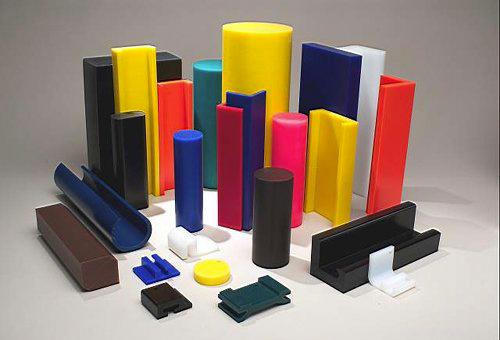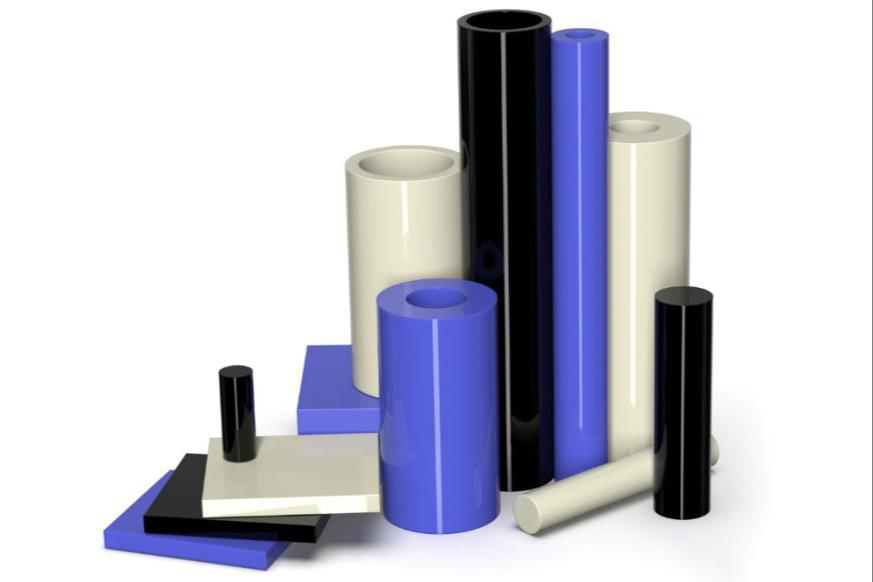1. Nhựa cách điện
Các hợp chất nhựa nhiệt dẻo dẫn điện được chia thành nhiều loại dựa trên tính chất điện và tốc độ phân rã của chúng. Chúng được xác định bởi điện trở suất bề mặt, đó là một cách đo lường mức độ dễ dàng điện tích đi qua một chất. Đối với nhựa cách điện, điện trở suất bề mặt trong khoảng từ 1013 - 1018 ohm/sq.
Tính cách điện của nhựa làm cho nó trở thành một vật liệu phổ biến cho các sản phẩm dây, cáp, ống cách điện và các lớp bảo vệ. Nhựa mang lại độ bền điện môi, hiệu suất nhiệt, cách điện và ăn mòn cao, khả năng chịu nước và nhiệt, lý tưởng cho các thành phần điện an toàn, hiệu suất cao. Chúng cung cấp tính linh hoạt cho các ứng dụng dây và cáp và độ cứng cho ống dẫn và vỏ bọc. Các hợp chất có thể được xây dựng để tuân thủ các tiêu chuẩn an toàn công nghiệp và quy định. Hamakyu cũng cung cấp các loại nhựa cách điện sử dụng làm các tấm lót silo, các chi tiết máy dùng trong nhiều ngành công nghiệp như sản xuất thực phẩm, thiết bị y tế, sản xuất điện…Các sản phẩm có thể kể đến như: Tivar siêu cao phân tử PE-UHMW, Polyamide - PA, Polycarbonate - PC, Polyethylene terephthalate -PET, Polyacetal - POM, Polybenzimidazole - Duratron® PBI, PI, Polyamide-imide - Duratron® PAI, PTFE, Polyetheretherketone - PEEK, Polyphenylene sulfide - Techtron® PPS, Polyphenylene sulfone - Quadrant® PPSU, Polyetherimide - PEI, Polysulfone - PSU, Fluoropolymers - PVDF...

2. Nhựa dẫn điện
Các vật liệu dẫn điện có điện trở bề mặt dưới 106 ohm/sq (trong khoảng từ 102 – 106 ohm/sq) và có tỷ lệ phân rã được đo bằng nano giây. Một số loại nhựa có khả năng dẫn điện như: Ketron® LSG CA30 PEEK, Ketron® CA30 PEEK…
Độ dẫn điện của nhựa đạt được bằng cách bổ sung các chất hoạt tính điện. Chúng bao gồm, nhưng không giới hạn, các loại chất dẫn điện đặc biệt như : cácbon đen, sợi cacbon, ống carbon nano, hoặc các vật liệu có nguồn gốc tự nhiên.
Nhựa dẫn điện được sử dụng trong việc lưu giữ, đóng gói, hàng không vũ trụ, thiết bị y tế, ô tô, điện tử, máy tính và các thiết bị công nghiệp. Các ứng dụng cụ thể bao gồm bao bì điện tử, hệ thống nhiên liệu ô tô, và các hộp lưu trữ dẫn lưu cho mực và chất lỏng độc hại. Nhựa dẫn điện cũng được sử dụng trong các thiết bị y tế như máy rút viên thuốc...
Nhựa có đặc tính điện cụ thể mang lại nhiều ưu điểm so với các vật liệu khác, vì chất nhựa dẫn điện có khả năng chống chịu thời tiết tốt, bảo vệ chống lại các áp suất cơ nhiệt và chỉ có khả năng ăn mòn tối thiểu.
3. Nhựa chống tĩnh điện
Vật liệu được coi là chống tĩnh điện có điện trở suất bề mặt trong khoảng 105 ohm/sq đến 1012 ohm/sq và cho phép tản điện thường là trong vòng mini giây. Nhựa chống tĩnh điện tĩnh cung cấp nhiều ưu điểm so với các vật liệu khác vì chúng có trọng lượng nhẹ hơn, có khả năng chống chịu thời tiết tuyệt vời và bảo vệ tốt chống lại các áp suất cơ nhiệt. Nhựa chống tĩnh điện bao gồm nhiều loại như: UHMW-PE (Tivar chống tĩnh điện), Nhựa PEI chống tĩnh điện - Semitron® ESD 410C, Nhựa PEEK chống tĩnh điện - Semitron® ESD 490HR, Nhựa PEEK chống tĩnh điện - Semitron® ESD 480, Nhựa Semitron® MDS100, Nhựa Semitron® MP 370, Nhựa PTFE chống tĩnh điện - Semitron® ESd 500HR, Nhựa PAI chống tĩnh điện Semitron® ESd 520HR, Nhựa PAI chống tĩnh điện Semitron® CMP XL20, Nhựa POM chống tĩnh điện - Semitron® ESd 225, Nhựa PET-P chống tĩnh điện - Semitron® CMP LL5.
Nhựa chống tĩnh điện được sử dụng để tránh các điện tích tĩnh để bảo vệ khỏi sự phóng điện tĩnh điện, chúng bảo vệ được các linh kiện có độ nhạy cao. Nhựa chống tĩnh điện cũng có thể được sử dụng, làm giảm đáng kể thiệt hại hoặc phá hủy các thành phần trong quá trình sản xuất. Vật liệu này cũng được sử dụng trong ngành công nghiệp cơ khí, trong công nghệ băng tải và trong lĩnh vực bảo vệ chống nổ. Trong các ứng dụng này, khả năng tiêu hao điện năng một cách có chọn lọc là một yếu tố quan trọng trong việc ngăn ngừa sự phóng điện gây nổ.
Nhựa chống tĩnh điện tĩnh cung cấp nhiều ưu điểm so với các vật liệu khác vì chúng có trọng lượng nhẹ hơn, có khả năng chống chịu thời tiết tuyệt vời và bảo vệ tốt chống lại các áp suất cơ nhiệt.






